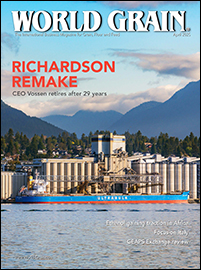BRUSSELS, BELGIUM — After a strong growth in 2008 (almost 60%) European fuel ethanol production continued to increase considerably in 2009 by 31%, said the European Bioethanol Fuel Association (eBIO) on July 28. This gives a clear signal to all doubters that European ethanol is here to stay and to fulfill its increasingly important role in curbing greenhouse gas emissions and in contributing to energy security.
Total E.U. production in 2009 was an estimated 3.7 billion liters up from 2.8 billion liters the previous year. This represents a significant increase of 31%.
Several countries increased their ethanol fuel production considerably in 2009. The biggest producer however is still France with an annual output in 2009 of 1.25 billion liters. This represents an increase of 25% compared to 2008 (1 billion liters). Second largest producing country is Germany, which constantly increased its production by 32% to 750 million liters (568 million liters in 2008). Third biggest producer remained Spain with 465 million liters (an increase of 46% compared to 2008). In six out of 18 producing member states the production declined while the rest either increased their production (10) or kept it steady.
In 2009, two countries more than doubled their fuel ethanol output, namely Austria (102%) and Sweden (124%), which are now ranking as forth and fifth largest producer respectively.
The consumption also saw substantial growth, eBIO said. Total E.U. consumption of fuel ethanol in 2009 amounted to an estimated 4.3 billion liters (up from 3.5 billion liters in 2008). This constitutes a considerable increase of 23%. The biggest consuming country was Germany (1.143 billion liters) followed by France (798 million liters) and Sweden (377 million liters).
Brazil is still the most important supplier of ethanol for fuel, but were down 200 million liters compared to 2008. However, 2009 showed a strong increase in ethanol imports from Nicaragua, Costa Rica and for the first time, the U.S. As E.U. trade statistics do not distinguish between ethanol imports by end-use it is not possible to tell how much precisely of all imported ethanol was used in the fuel stream.





